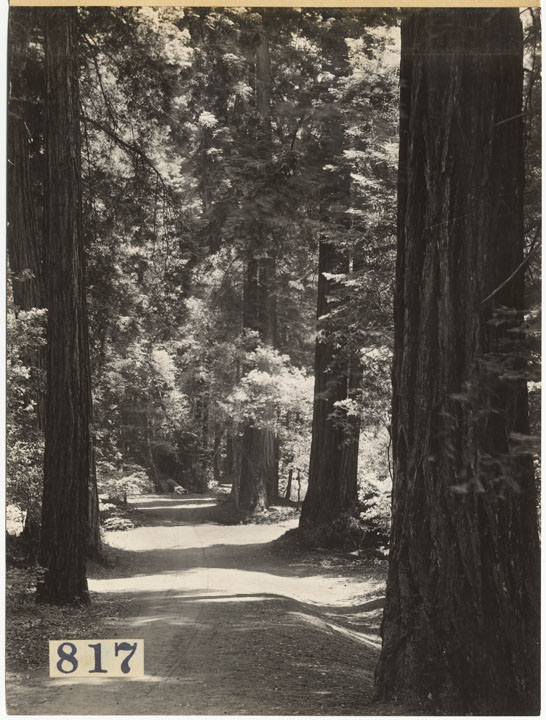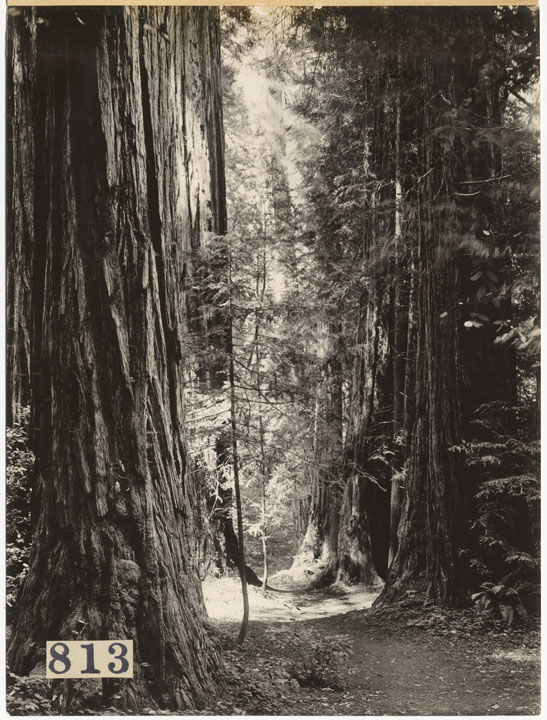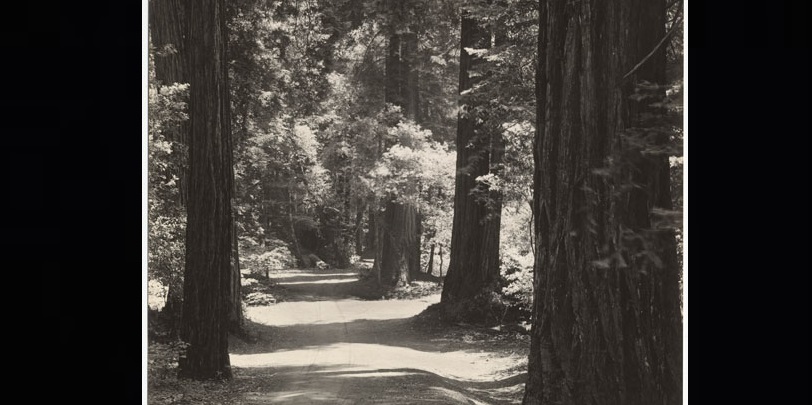
President Teddy Roosevelt issues the proclamation creating 295-acre Muir Woods National Monument, 12 miles north of San Francisco in Marin County. Muir Woods is the seventh National Monument and the first created from land donated by a private individual.
Actually, private individuals. The donated acreage is part of 611 acres purchased in 1905 by William Kent and his wife, Elizabeth Thacher Kent, in an attempt to protect one of the last stands of uncut old growth redwood in the Bay Area. (The nearby town of Kentfield is named for Kent’s father, Albert Emmet Kent, who moved the family there from Chicago in 1871.) Although the value of the Kents’ land holdings makes them wealthy, the couple doesn’t have enough cash to cover the $45,000 purchase price for the acreage. A sympathetic banker loans them the money. The exposure worries Elizabeth but her husband insists “if we lost all the money we have and saved these trees, it would be worthwhile, wouldn’t it?”
Kent’s efforts to protect the redwoods are threatened when a Sausalito water company goes to court to condemn the land in order to dam the creek that runs through the property. To stop them, the Kents donate the 295 acres to the federal government. In late December 1907, Kent sends the deed to the property to the U.S. Secretary of the Interior. The cover letter says in part:
“After having traveled over a large part of the open country in the United States, I consider this tract with its beautiful trees, ferns, wild flower and shrubs as one of the most attractive bits of wilderness I have ever seen. In tendering it, I request that it be known as Muir Woods in honor of John Muir.”

At the time, Kent has never met Muir, who lives across the Bay in Martinez. Muir visited the woods only once before 1908 but he is aware of Roosevelt’s proclamation creating the national monument and writes that he’s “delighted with the salvation of the Tamalpais Redwood Groves,” pledging to send Kent a thank you note.
On January 22, Roosevelt writes to Kent saying he wants to name the woods after him, not Muir.
“I have a very great admiration for John Muir; but after all, my dear sir, this is your gift. No other land than that which you give is included in this tract of nearly 300 acres and I should greatly like to name the monument the Kent Monument if you will permit it.”
Kent replies:
“Your kind suggestion of a change of name is not one that I can accept. So many millions of better people have died forgotten, that to stencil one’s own name on a benefaction, seems to carry with it an implication of mandate immortality, as being something purchasable.
“I have five good, husky boys that I am trying to bring up to a knowledge of democracy and to a realizing sense of the rights of the “other fellow,” doctrines which you, sir, have taught with more vigor and effect than any man in my time. If these boys cannot keep the name of Kent alive, I am willing it should be forgotten.
“I have this day sent you by mail a few photographs of Muir Woods, and trust that you will believe, before you see the real thing (which I hope will be soon) that our Nation has acquired something worthwhile.”
Roosevelt’s February 5 response to Kent:
“By George! you are right. It is enough to do the deed and not to desire, as you say, to ‘stencil one’s own name on the benefaction.’ Good for you, and for the five boys who are to keep the name of Kent alive! I have four who I hope will do the same thing by the name of Roosevelt. Those are awfully good photos.”
Muir says in a February 6 note of thanks to Kent:
“Saving these woods from the axe & saw, from money-changers and water-changers & giving them to our country & the world is in many ways the most notable service to God & man I’ve heard of since my forest wanderings began. A much needed lesson & blessing to saint & sinner alike & credit & encouragement to God…. Immortal Sequoia life to you!”
Kent, a member of Congress from 1911 to 1917, is the principal sponsor in the House of Representatives of the 1916 legislation creating the National Park Service, which is signed into law by President Woodrow Wilson on August 25, 1916. He and his wife donate additional acres to Muir Woods, which now covers 554 acres.
